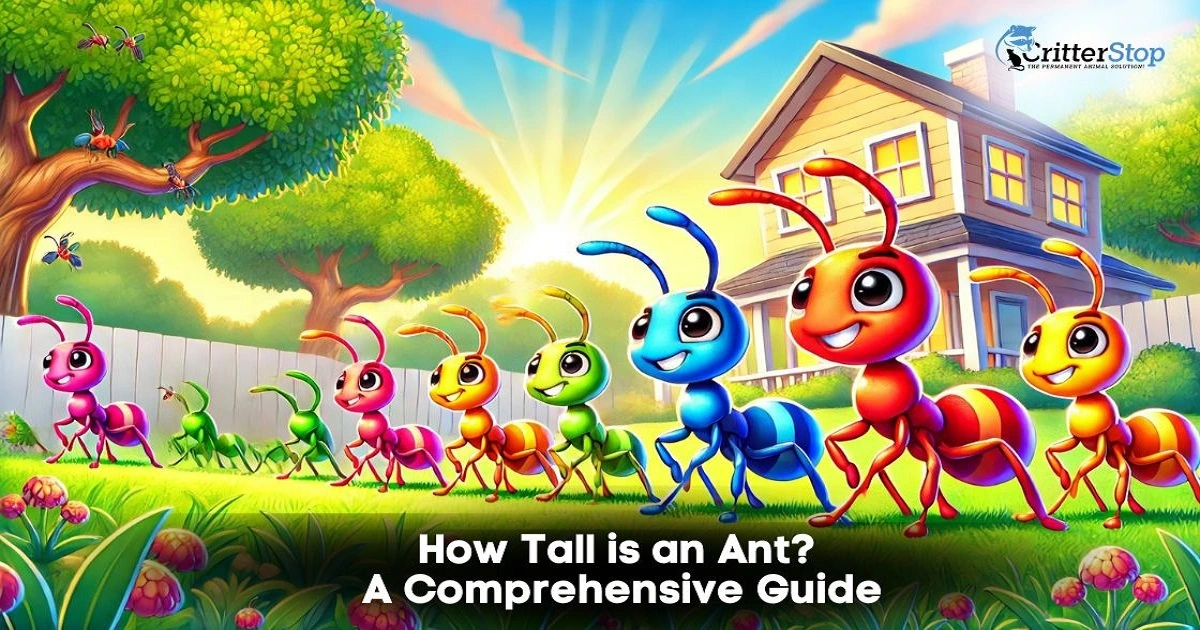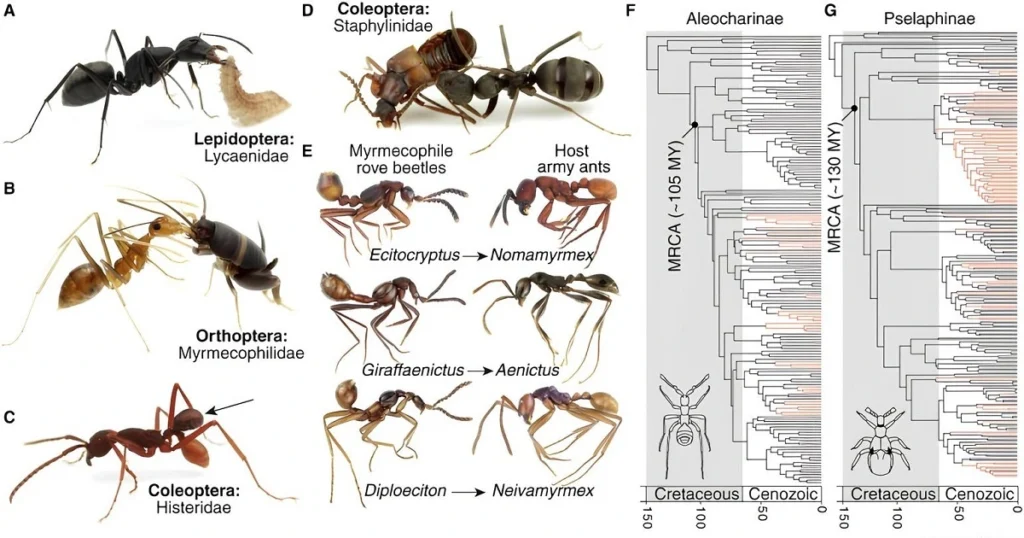
Ants are fascinating creatures that have intrigued scientists and laypeople alike for centuries. Their intricate social structures, dynamic nature, and ability to adapt to various environments make them a subject of endless study and curiosity. One question that often arises is: how tall is an ant? This seemingly simple question leads us to a deeper understanding of these remarkable insects.

To comprehend the height of an ant, we must first delve into its anatomy. Ants belong to the family Formicidae, and their body structure is divided into three main parts: the head, the thorax, and the abdomen. These sections are connected by a narrow waist, known as the petiole.
The head houses important sensory organs and mouthparts. Ants have compound eyes, antennae, and mandibles. The size and shape of the head can vary significantly between species, influencing the ant's overall height.
The thorax is the center of movement, where the legs and wings (if present) are attached. This section's size also affects the ant's height, as it provides the main structural support for locomotion.
The abdomen contains vital organs, including the digestive and reproductive systems. Depending on the ant's activities and nutritional intake, it can expand and contract.
Ants come in various sizes, ranging from the minute to the relatively large. Their height can be influenced by species, caste, and environment.
There are over 12,000 known species of ants, each with unique characteristics. Ant heights can vary greatly between species. For instance, the smallest ants, like the Pharaoh ant (Monomorium pharaonis), measure just about 2 millimeters in length. On the other end of the spectrum, the Bulldog ant (Myrmecia pyriformis) can reach lengths of up to 20 millimeters, making them some of the largest ants.
Significant size differences can exist among the various castes within a single species. Ant colonies typically have three main castes: workers, soldiers, and queens. Workers are usually the smallest, while soldiers are larger due to their role in defending the colony. Queens are often the largest, as they are responsible for reproduction. This caste-based size variation can result in noticeable differences in ant height within a colony.
The environment in which an ant lives can also impact its size. Nutritional availability, temperature, and habitat conditions can all play a role in determining the physical characteristics of ants. For example, ants in nutrient-rich environments grow larger than those in areas with limited resources.

When we refer to an ant's height, we typically mean the distance from the ground to the highest point of the ant's body, which is usually the top of the thorax or head. Measuring such a small creature can be challenging, but technological advancements have made it possible to obtain accurate measurements.
Most ants range in height from 1 to 20 millimeters. To put this in perspective, a typical house ant (Formica fusca) is about 4 to 7 millimeters tall.
Scientists use various tools to measure ants, including magnifying lenses, microscopes, and precision calipers. These instruments allow researchers to capture detailed measurements of an ant's height, contributing to our understanding of their biology and ecology.
Carpenter ants are among the larger ant species, with workers measuring 6 to 12 millimeters tall. These ants are known for their wood-boring habits, which can cause structural damage to buildings. Their size makes them formidable foragers and defenders of their colonies.
Fire ants are notorious for their painful stings and aggressive behavior. Workers vary in size from 2 to 6 millimeters, while queens can be significantly larger. Despite their small size, fire ants can inflict considerable pain and damage, highlighting the importance of their height and strength in their ecological niche.
Leafcutter ants are fascinating for their agricultural practices, cultivating fungus as a food source. Workers range from 5 to 20 millimeters, with distinct size polymorphism within the caste. The largest workers, known as majors, can reach up to 20 millimeters, making them one of the tallest ant species.
An ant's height is crucial in its behavior and ecological interactions. Larger ants, such as soldier castes, are better equipped to defend the colony and gather food. Smaller ants, often workers, are more adept at performing tasks that require agility and precision, such as caring for the young and maintaining the nest.
Taller ants, like the soldier caste of certain species, use their size to intimidate predators and rivals. Their increased height and robust mandibles allow them to fend off threats effectively, ensuring the colony's safety.
Height can also influence foraging efficiency. Larger ants can cover more ground and carry heavier loads, which is advantageous for gathering resources. Conversely, smaller ants can navigate tighter spaces and access unreachable food sources to their larger counterparts.
The height and size of ants within a colony have significant implications for its dynamics and efficiency. Each caste's size affects its ability to perform specific tasks, and the overall size distribution within the colony can influence how resources are allocated and tasks are prioritized.
In ant colonies, the division of labor is often closely tied to the physical characteristics of the ants. Smaller worker ants are generally responsible for tasks that require delicacy and precision, such as brood care, nest maintenance, and food storage. Their smaller size allows them to maneuver easily within the nest and handle delicate tasks without causing damage.
Larger ants, including soldiers and major workers, are better suited for defense and heavy labor. Their size gives them the strength needed to fend off predators and rivals and the ability to transport larger food items back to the colony. This division of labor, based on size and height, ensures that the colony operates efficiently and that all necessary tasks are completed effectively.
The ants' height and size also affect how resources are allocated within the colony. Larger ants require more food to sustain their larger bodies and often have higher metabolic rates. As a result, the colony must ensure sufficient resources are available to support these larger individuals.
In many species, foraging strategies are adapted to optimize resource collection based on the size distribution of the colony members. For example, larger ants may forage for food items too heavy for smaller workers to carry, while smaller workers focus on gathering smaller, more abundant food sources. This complementary foraging strategy maximizes the efficiency of resource collection and ensures that the colony's nutritional needs are met.

The variation in height and size among ants within a colony provides several evolutionary advantages. This polymorphism allows colonies to adapt to various environmental conditions and challenges, enhancing their survival and reproductive success.
Ant colonies with a diverse range of sizes among their members are better equipped to respond to environmental changes and threats. For example, larger soldiers can provide enhanced protection for the colony during periods of high predation pressure. In contrast, smaller workers may find and exploit limited food sources more efficiently during resource scarcity.
This adaptive flexibility allows ant colonies to thrive in various habitats, from tropical rainforests to arid deserts. The ability to adjust their behavior and resource allocation based on the size distribution of colony members is a key factor in the success of ants as a group.
Size variation within a species can also reduce intraspecific competition by allowing different castes to specialize in different tasks. This specialization reduces direct competition for resources and enables the colony to exploit a wider range of food sources and habitats. By minimizing competition within the colony, ants can maximize their overall productivity and efficiency.
Understanding the height and size of ants is not only important for studying their biology and ecology but also has practical implications for human interactions with these insects. Knowledge of ant size can inform pest control strategies, conservation efforts, and even technological innovations inspired by ant behavior.
Effective pest control strategies often depend on understanding the physical characteristics and behaviors of the target species. For example, larger ant species may require different bait formulations or trap designs than smaller species. By tailoring pest control methods to the specific size and height of the ants, it is possible to improve the effectiveness of these interventions and reduce the impact of ant infestations.
For those facing persistent ant problems, professional help can be invaluable. Critter Stop, a professional humane wildlife removal company, offers comprehensive pest control services tailored to your needs. Critter Stop has earned a fantastic reputation, supported by stellar customer reviews online, for providing high-quality work and exceptional customer service. If you're struggling with an ant infestation or other wildlife issues, contact Critter Stop at (214) 234-2616 for a free inspection.
Ants are fascinating creatures with diverse species and unique characteristics. Understanding their height can provide valuable insights into their biology, behavior, and their roles in their ecosystems. This FAQ section addresses some common questions about ants' height in various environments.
Ant heights can vary significantly in the wild depending on the species and environmental conditions. Typically, ants in the wild range from 1 to 20 millimeters in height. Species like the Pharaoh ant are on the smaller end of the spectrum, while larger species like the Bulldog ant can reach up to 20 millimeters. The variation in height allows ants to adapt to different ecological niches and survive in diverse habitats.
Ants that inhabit households generally include species like the common house ant (Formica fusca), which typically measure 4 to 7 millimeters in height. The controlled environment of a household, with consistent food sources and fewer predators, can sometimes lead to slight variations in their size compared to their wild counterparts. However, their overall height remains within the typical range for their species.
Ants' height can be closely monitored and measured in controlled environments, such as laboratories. On average, ants in such settings maintain their natural size range, with most species measuring between 2 and 15 millimeters. Controlled environments provide a stable setting for studying ant development, ensuring that factors like nutrition and habitat conditions are optimal for their growth.
Yes, ant height and size significantly impact their functionality within the colony. Larger ants, such as soldiers, are better suited for defense due to their robust mandibles and intimidating presence. On the other hand, smaller workers are more agile and efficient at tasks requiring precision, like caring for larvae and foraging for food. This size-based division of labor ensures the colony operates efficiently and effectively.
Ants born in captivity, such as those in ant farms or research facilities, grow to heights similar to their wild counterparts. The controlled conditions, including consistent food supply and absence of natural predators, ensure that ants develop within their species-specific size range. For example, captive ants can range from 2 to 15 millimeters, depending on the species and the care provided.
Understanding ants' heights in different environments helps us appreciate their adaptability and roles within their ecosystems. For any pest control needs, including ant infestations, trust Critter Stop. Our professional team provides humane wildlife removal services and has earned a fantastic reputation for high-quality work and excellent customer service. Contact Critter Stop at (214) 234-2616 for a free inspection, and let us help you keep your home pest-free.
Visit our Critter Library and learn more about our furry friends